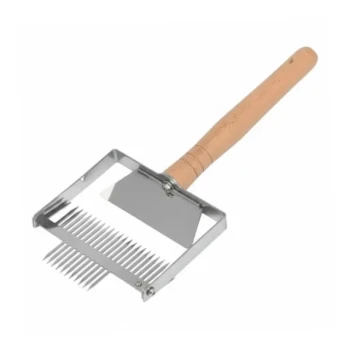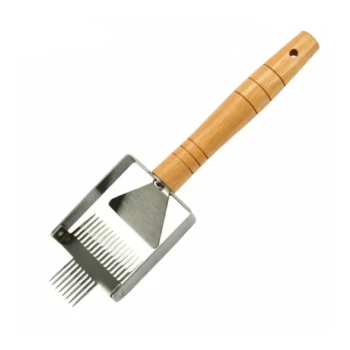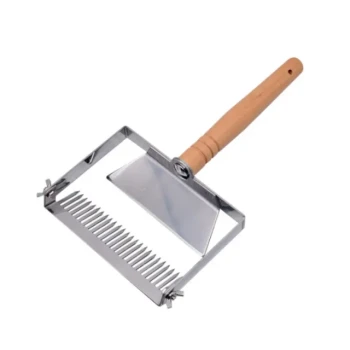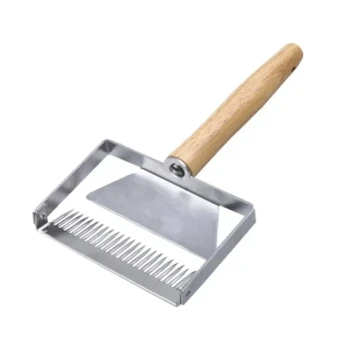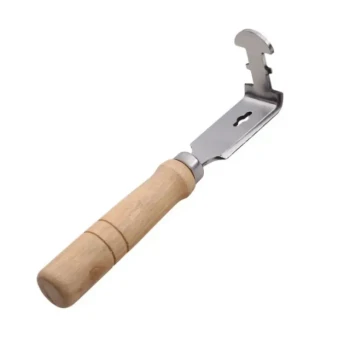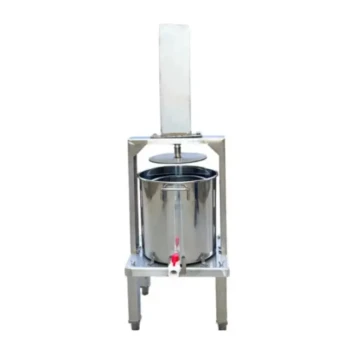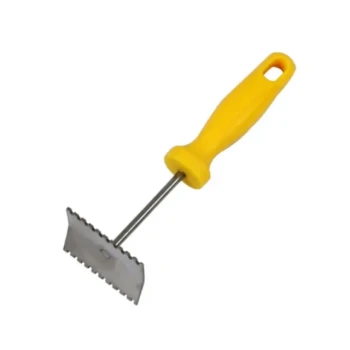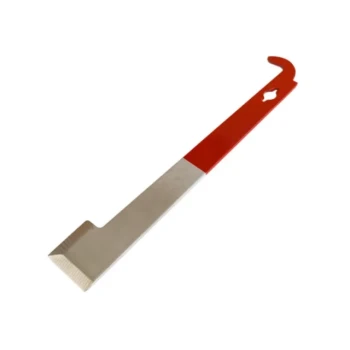In short, a capping scratcher is used as a cleanup tool after the primary work is done by the electric knife. The electric knife quickly removes the vast majority of the wax cappings from a frame of honeycomb. The capping scratcher is then used to manually break open any individual honey cells that the knife blade missed, typically in the low spots of the comb.
The core principle is efficiency: use the electric knife for speed and bulk removal, and the capping scratcher for precision and detail work on missed areas. This two-tool combination is significantly faster and cleaner than using a scratcher alone.

The Primary Role: The Electric Uncapping Knife
An electric uncapping knife is the primary tool in this workflow, designed for speed and removing large sections of wax capping at once.
The Goal is Speed and Volume
The heated blade of the knife slices cleanly through the wax cappings, allowing them to fall away from the frame. This method is exceptionally fast for processing multiple frames.
Inherent Imperfections
No honeycomb frame is perfectly flat. There will always be shallow valleys or dips in the comb that the flat blade of the knife will skim over without touching. This leaves small patches of honey cells still sealed with wax.
The Supporting Role: The Capping Scratcher
The capping scratcher is a simple, fork-like tool with sharp tines. Its job is to handle the details the knife cannot.
Targeting Missed Cells
After a pass with the electric knife, you will inspect the frame and notice these small, sealed patches. The capping scratcher is used specifically on these areas.
The "Scratching" Action
By running the tines of the scratcher over the remaining capped cells, you pierce and break the wax seals. This ensures the honey can flow out during the extraction process. You are not trying to remove the wax, merely to perforate it.
Understanding the Trade-offs
Using only one of these tools for the entire job is inefficient and creates distinct problems.
Why Not Only Use the Knife?
An electric knife alone will always leave capped cells in any low spots. This means you will leave behind a significant amount of honey trapped in the frame after extraction.
Why Not Only Use the Scratcher?
Uncapping an entire frame with just a scratcher is extremely time-consuming and messy. It shreds the cappings into small pieces that mix with the honey, making the filtering and processing more difficult later on.
A Practical Workflow for Efficient Uncapping
Combining the tools creates a simple and effective process.
Step 1: The Main Pass
Hold the frame securely and use the electric knife to slice off the cappings from top to bottom. Let the removed cappings fall into a designated bucket or uncapping tank.
Step 2: Quick Inspection
Briefly turn the frame in the light. You will easily see the glistening, open cells versus the dull, wax-covered cells that were missed.
Step 3: Targeted Scratching
Take your capping scratcher and run it over only the missed patches. A quick flick or two is all that is needed to break the seals. The frame is now ready for the extractor.
Optimizing Your Uncapping Process
Your specific approach can be tailored to your primary goal.
- If your primary focus is maximum speed: Make one clean pass with the knife and only use the scratcher on the most obvious missed patches.
- If your primary focus is maximum honey yield: Be more meticulous with the scratcher after the knife pass, ensuring every single cell is opened before extraction.
By using each tool for its intended purpose, you create a workflow that is fast, clean, and effective.
Summary Table:
| Tool | Primary Function | Best For |
|---|---|---|
| Electric Knife | Fast, bulk removal of wax cappings | Speed and processing large volumes of frames |
| Capping Scratcher | Manual opening of missed, sealed cells | Precision work on hard-to-reach comb areas |
Maximize the efficiency of your honey harvest! The right tools make all the difference. HONESTBEE supplies durable, professional-grade uncapping knives and capping scratchers to commercial apiaries and beekeeping equipment distributors through our wholesale-focused operations. Let us equip your operation for maximum speed and yield. Contact our team today to discuss your needs!
Visual Guide
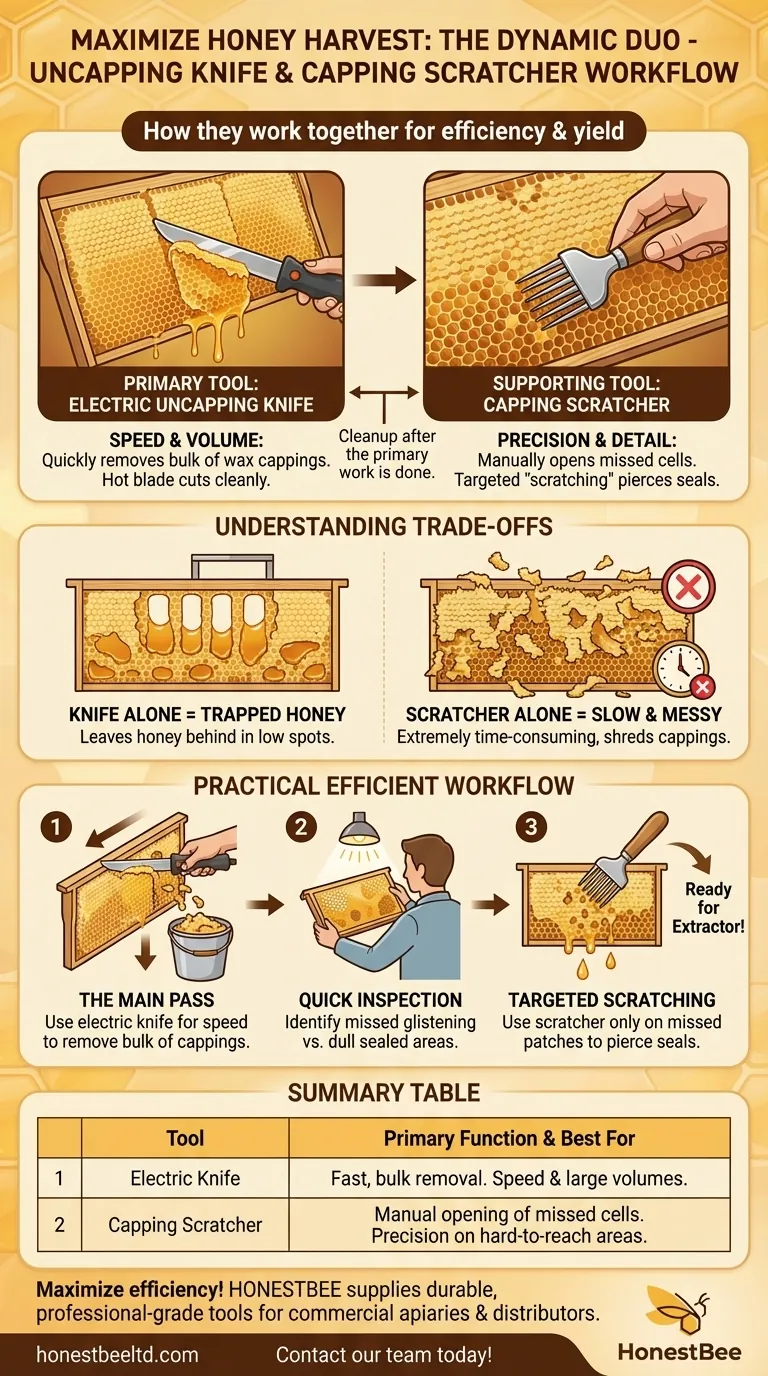
Related Products
- Professional Wide Blade Honey Scraper for Beekeeping and Honey Processing
- Professional Long-Handled Silicone Honey Scraper for Beekeeping
- Stainless Steel Dual Blade Uncapping Plane
- Stainless Steel Double Sided Honey Uncapping Fork with Scraper
- Double-Sided Pivoting Honey Uncapping Fork with Scraper for Beekeeping
People Also Ask
- What tools are available for uncapping honey? A Guide to Choosing the Right Tool for Your Operation
- Why is uncapping necessary in honey harvesting? Unlock Your Honey Yield & Preserve Comb
- Why are my bees not capping honey? Understand the Key to Perfect Honey Ripening
- Why is my honey frame not capped? Your Guide to Perfectly Ripe Honey
- Can I extract uncapped honey? Avoid spoilage by trusting the bees' quality control.



